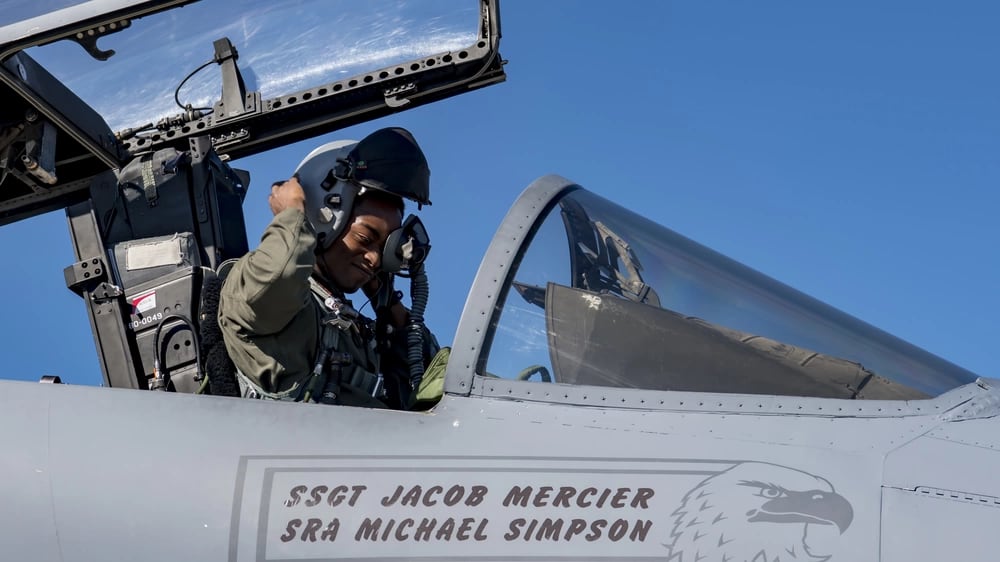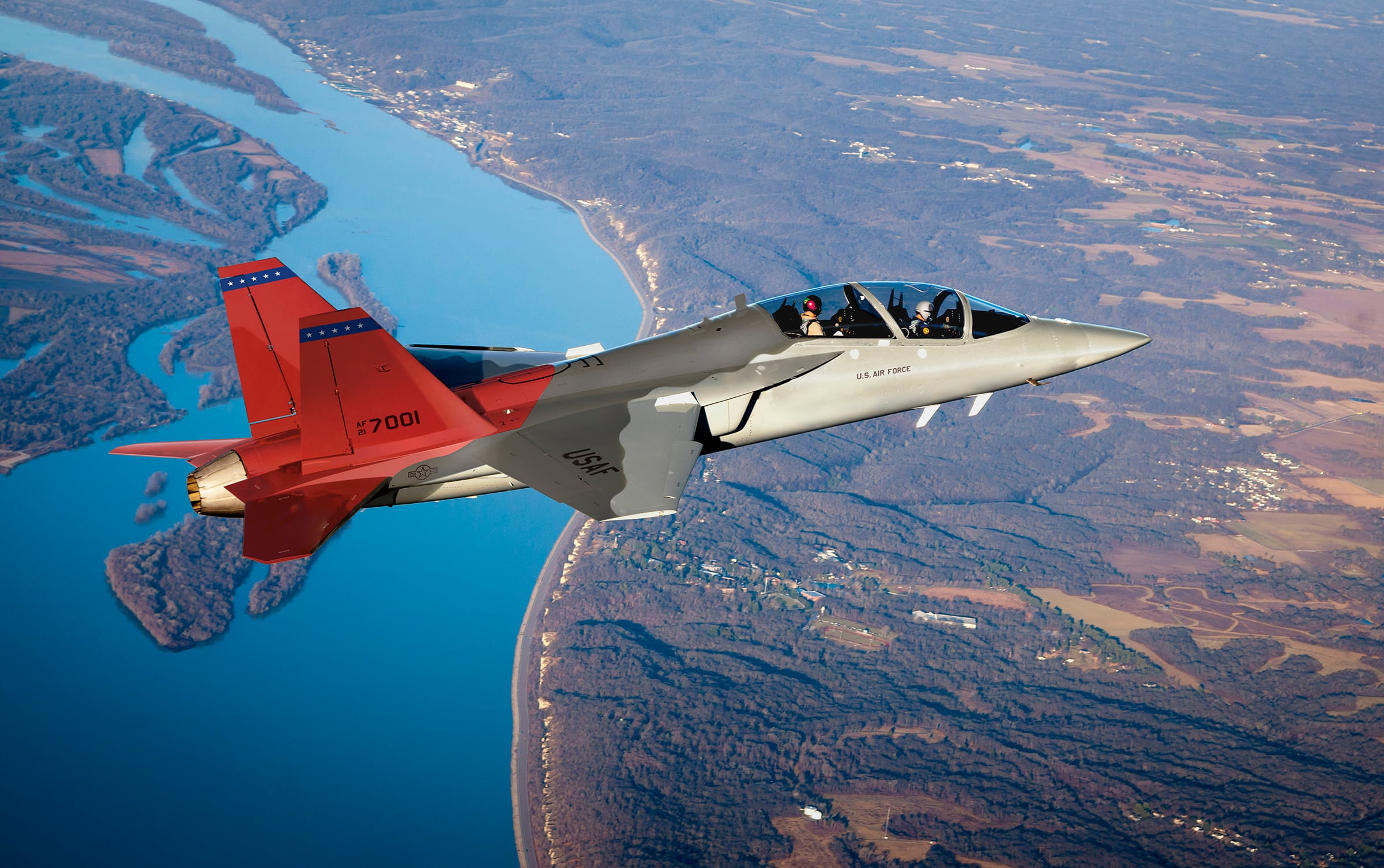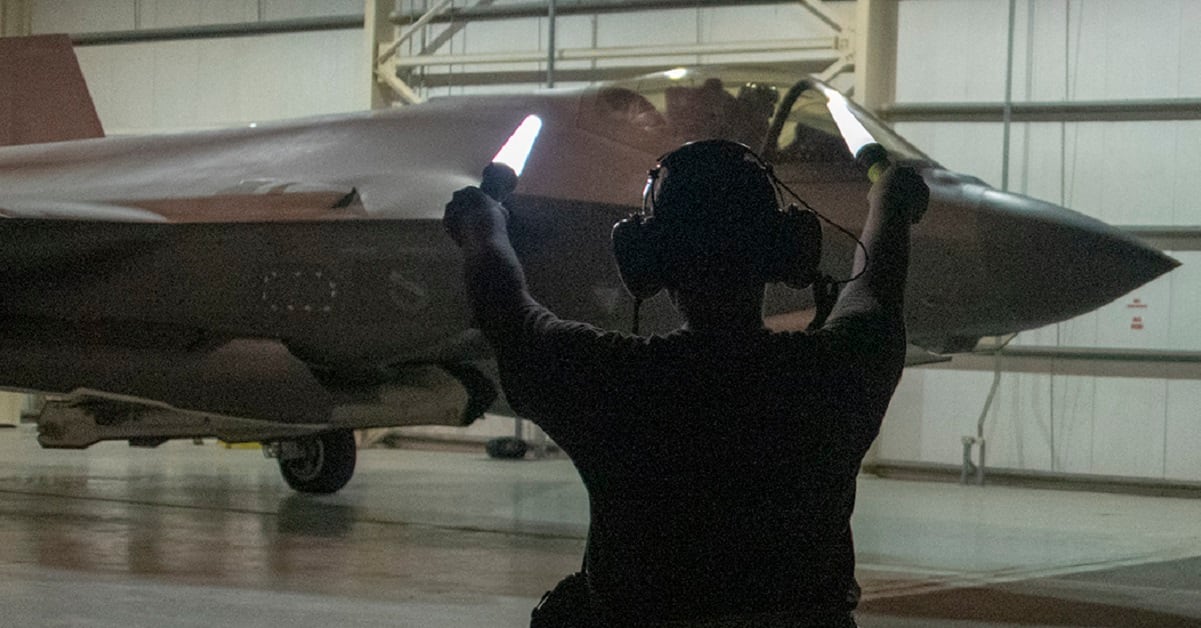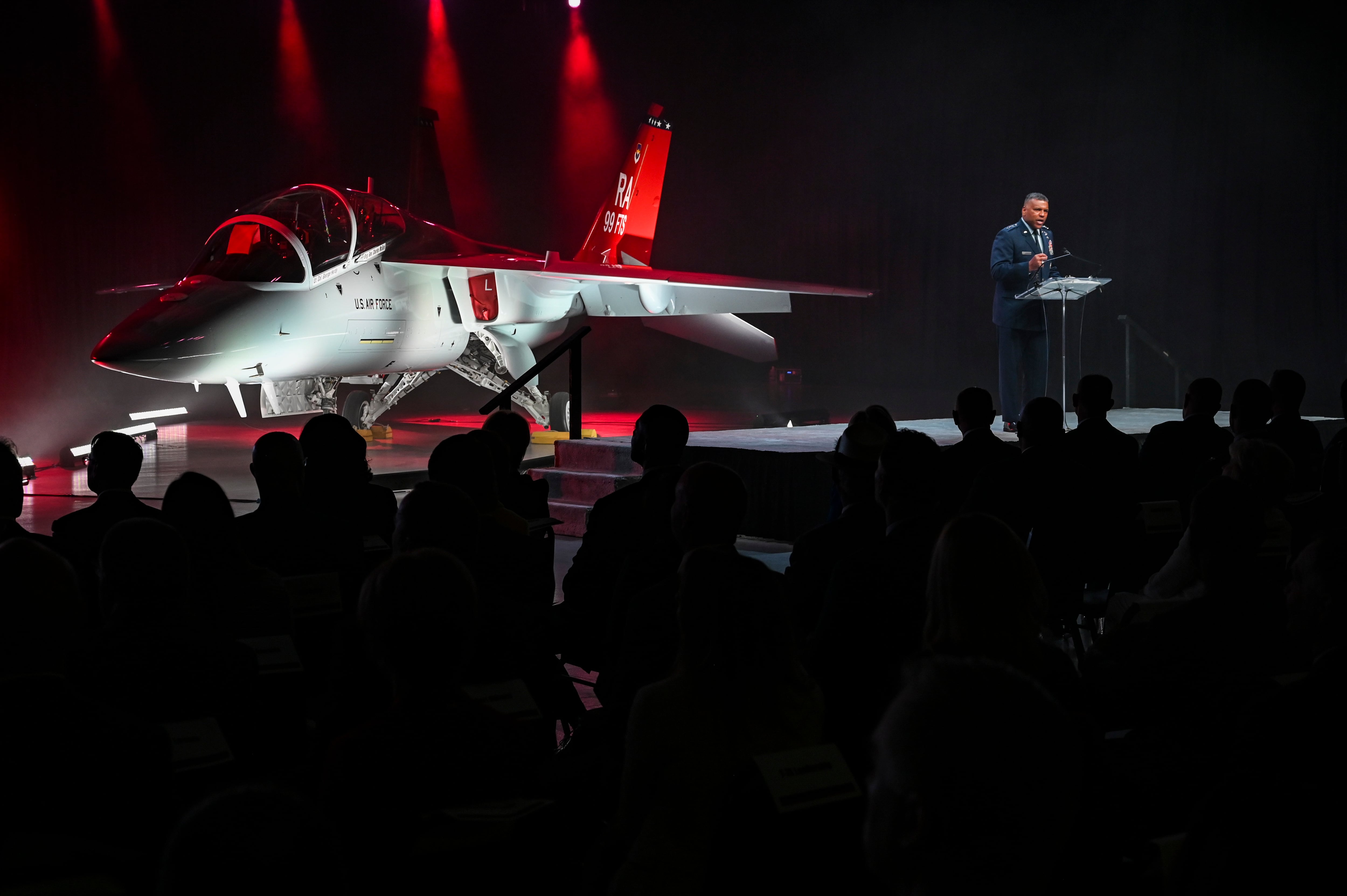Correction: A previous version of this story misstated the amount of money Boeing was charged for changes to the T-7A Red Hawk program in the third quarter of 2022. That has been updated to $285 million.
Design and testing hiccups on the Air Force’s new T-7A Red Hawk training jet, in development at Boeing, have pushed aircraft production into 2024, Air Force Times has learned.
Setbacks have dulled the shine of a program hailed as a major step forward in the adoption of faster, digital-first aircraft design. It also pressures the Air Force to maintain its aging T-38 Talon fleet longer than expected until a replacement is ready.
Pre-production flight testing is slated to start in 2023, and Boeing expects the Air Force will order its first set of operational aircraft in 2024. Inside Defense first reported on potential delays in November.
RELATED

When the Air Force awarded Boeing a $9.2 billion contract to design and build the next-generation training jet in 2018, the first five operational aircraft were scheduled for delivery in 2023. The service plans to buy 351 Red Hawks, 46 simulators and the associated ground equipment.
“We are working with the Air Force to re-baseline the schedule, including identifying opportunities to recover schedule after continued COVID-19 supply chain and workforce disruptions,” Boeing spokesperson Didi VanNierop said in an email.
At issue are the emergency egress systems, including ejection seats, and flight control software, Boeing and Air Force officials said.
It’s not your standard ejection system: In 2020, the Air Force mandated that companies must design future aircraft to fit a wider range of recruitable Americans, rather than past standards based on a 1967 survey of male pilots that considered their standing and sitting heights and reach.
That led the Air Force to bar more than 40% of women — particularly women of color — from becoming pilots without a waiver.
RELATED

“Part of creating a new jet trainer is designing emergency systems with safety and redundancy in mind that enables students to leave the aircraft as safely as possible in the event of an emergency,” VanNierop said. “A new standard of safety has been defined for the T-7A to accommodate the wider range of body types and sizes for future aircrew.”

But creating a new jet escape system that works for the vast majority of all potential recruits has proven tricky. The program had conducted 14 qualifying tests on the egress system as of October 2021, when they were paused to address problematic results.
The assessments showed high risk for concussions, unsafe acceleration when a parachute opens, and the possibility that a pilot’s helmet visor could fly off at high speeds, Air Force spokesperson Maj. Alli Stormer said.
“Design improvements are ongoing and escape system testing is planned to resume in [the] first quarter of 2023,” Stormer said.
RELATED

Previous glitches with the flight control software have been resolved and will head into testing in early 2023 as well. An issue that caused the jet’s wings to rock back and forth was fixed last year.
“We continue to make meaningful progress with the U.S. Air Force on qualification activities while mitigating risk to the schedule,” VanNierop said.
Defense News reported in December 2021 that Boeing expected a formal decision to move out of the engineering and manufacturing development phase of acquisition and into production — known as a “milestone C” decision — in July 2023. The Air Force’s fiscal 2023 budget request, released in April, estimated that will come between October and December 2023.
Boeing also anticipated the program would reach “initial operational capability,” or the minimum number of aircraft and other resources needed to perform a basic set of missions, in 2024. The Air Force budget pegs that to early fiscal 2026.
RELATED

Boeing recently said it would pay the Air Force $285 million for charges related to the plane’s late-stage development and production. The Air Force directed a request for details on the fines to Boeing; the company declined to answer.
“Boeing and the USAF are working to shift as much test discovery and resolution as early as possible in the test program in [calendar year] 2023,” Stormer said. “The program is continually investigating strategies to improve the schedule to deliver the T-7 to [Air Education and Training Command].”
AETC commander Lt. Gen. Brian Robinson said during a live taping of the War on the Rocks podcast in Orlando, Florida, on Nov. 30 that the T-7 remains a “very capable” and “flyable” aircraft.
Still, his organization is considering how further delays to the program may affect the Air Force’s ability to graduate new fighter and bomber pilots using the legacy T-38, which was first delivered in 1961 and upgraded to the current T-38C starting in 2001.
“The T-38 was designed against the F-100 series type of aircraft,” Robinson said. “The skills can translate [to modern aircraft]. They just don’t translate as cleanly or as quickly as they otherwise would.”
Rachel Cohen is the editor of Air Force Times. She joined the publication as its senior reporter in March 2021. Her work has appeared in the Washington Post, the Frederick News-Post (Md.), Air and Space Forces Magazine, Inside Defense, Inside Health Policy and elsewhere.








